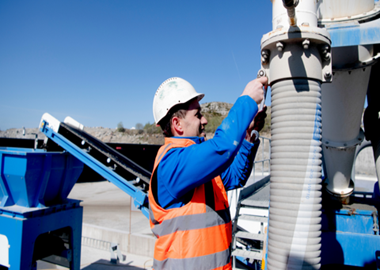CDE’s contaminant removal capabilities are expanding alongside a maturing soil remediation market, Daniel Webber, CDE Regional Manager Australasia, explains.
Long Island, an expansive, densely populated island in New York State’s south east, has for many years been troubled by pollution from toxic dumping and heavy industry.
Historically, contaminated soil would be transported off the island where it would be destined for landfill. However, with the right technology, this material can be processed to remove contaminants, extract value, and return land to good use to meet the growing demands of urbanisation.
Situation on the island is fourth-generation family business Posillico Inc, who’s recycled sand, aggregate and clay unit, Posillico Materials LLC, recognised the need to address mounting concerns over ground pollution and landfill capacity.
Together with global wet processing equipment specialists CDE, Posillico installed an innovative processing solution, the first of its kind in North America, which effectively processes incoming contaminated material to produce high-quality washed construction sand and aggregates, while simultaneously removing contaminates.
The system incorporates a range of CDE equipment, including an AggMaxTM portable logwasher, CFCU for density separation, EvoWashTM, AquaCycleTM thickener and a Filter Press.
As one of the largest and most advanced contaminated soil washing facilities in the world, the wash plant boasts a high material recovery rate. Posillico can now reduce the unsuitable content in the raw material to approximately 10 per cent on average, with the remaining 90 per cent being diverted from landfill into saleable construction materials.
According to Daniel Webber, CDE’s Regional Manager Australasia, Posillico is a marque project for CDE, with over 30 per cent of its global C&D waste processing solutions now treating some form of contaminated feed material. He explains that soil remediation and contaminant treatment is an evolving part of CDE’s extensive portfolio.
“We’ve been involved in targeted campaigns in the past where we designed and installed plants to treat soils contaminated with heavy metals and hydrocarbons,” Webber says.
More recently, the company installed a treatment solution at an Australian Airforce base, which successfully treated PFAS contaminated soil.
Through materials handling, scrubbing and washing, CDE was able to move PFAS into the water phase, before matching it with filtration technology to remove contaminants and remediate the soil.
Webber adds that CDE's mobile D:MAX dewatering system is currently in Melbourne treating PFAS contaminated soil from the city’s tunnelling projects.
At the other end of the spectrum, CDE’s C&D waste processing customers are increasingly looking to upgrade their plants to treat lightly contaminated soils at much higher throughput rates.
“This makes a lot of sense as they will often have much of the equipment required to treat contaminated soil, we just need to do some wrap around engineering to close the water loop,” Webber says.
He adds that treatment alternatives such as the heating of soils are incredibly energy intensive.
“As with anything in the waste space, the economies of that intensity are under a microscope. Is using huge amounts of electricity to heat soil and burn off hydrocarbons really that sustainable?
“We come under that microscope as well. There’s no point washing contaminated soil and making a toxic water stream, so we need to be responsible in how we handle that.”
While the soil remediation market is expanding, Webber says there are still learnings to be had around standards and flexibility.
“We can set a plant up that might be taking care of soils with hydrocarbon contamination, or maybe filtration for arsenic, but at the next site the contaminant could be lead or mercury,” he explains.
“At each site the contaminants change and it’s difficult to build plants that can deal with everything.
“The next step in our evolution is to develop flexible plants that can respond to different feed material coming in from various contaminated sites.”
With the remediation market and CDE’s place within it maturing, Webber says the company is well placed to match its materials handling, scrubbing and washing solutions with the filtration technology needed for the market.
Additionally, he notes CDE’s work developing solutions for non-destructive digging (NDD) muds, highlighting the varied nature of the soil remediation sector and the materials it is tasked with managing.
“I think a real success story in this space is the treatment of NDD muds. For a while now there have been government set levies on these materials, which has been the catalyst for the owners for hydro-excavation businesses investing in small plants, such as our G:MAX, to received and dewater these materials,” Webber says.
This environment has fostered impressive innovation, he adds, such as CDE’s new HYDRO:TIP solution, which directly receives waste from vacuum trucks and preps it for processing.
“This is a process where previously trucks would have to tip material into a pit and then an excavator operator would have to scope it into the processing plant,” Webber says.
“Removing those steps facilitates a faster and safer process, while reducing the volume of material sent to landfill.”





